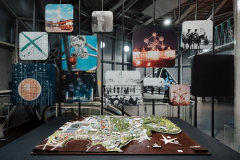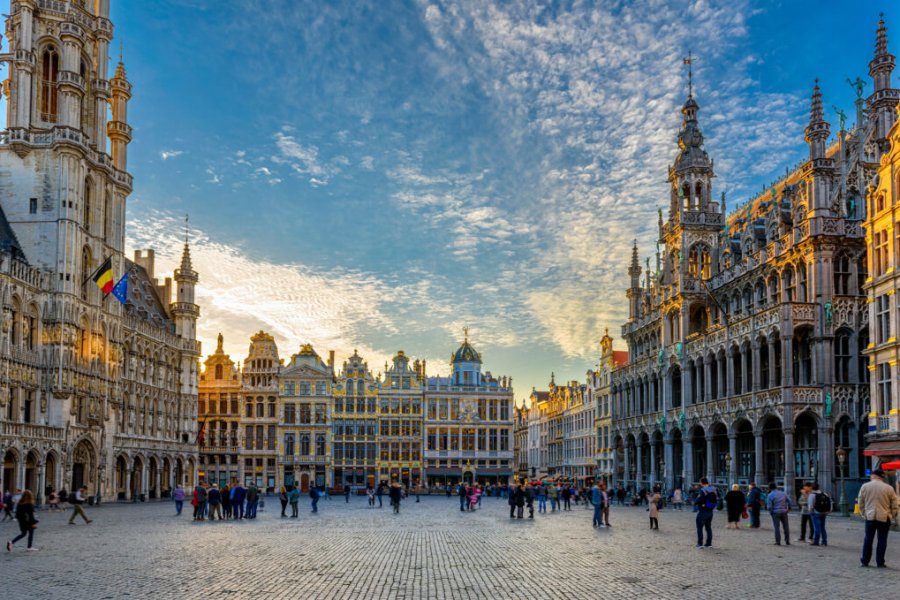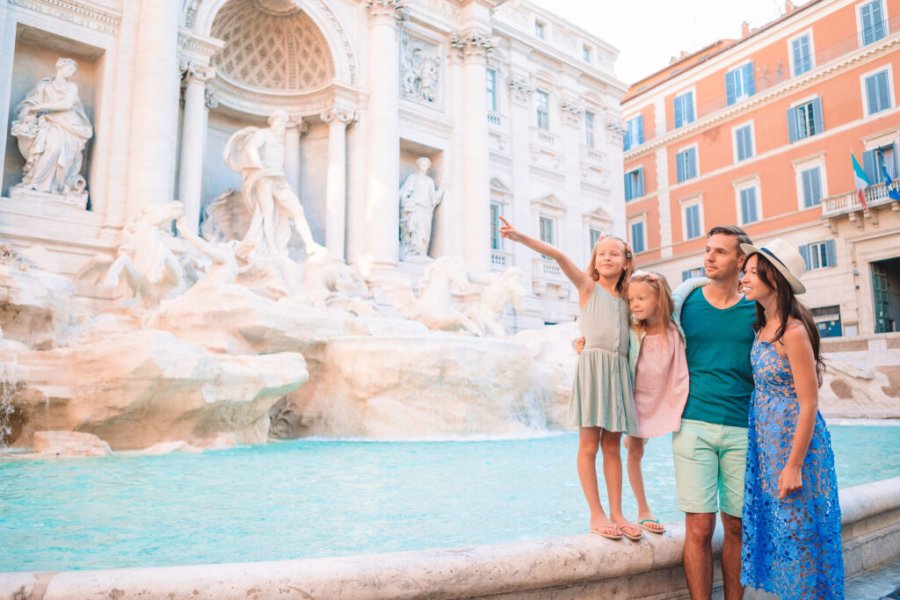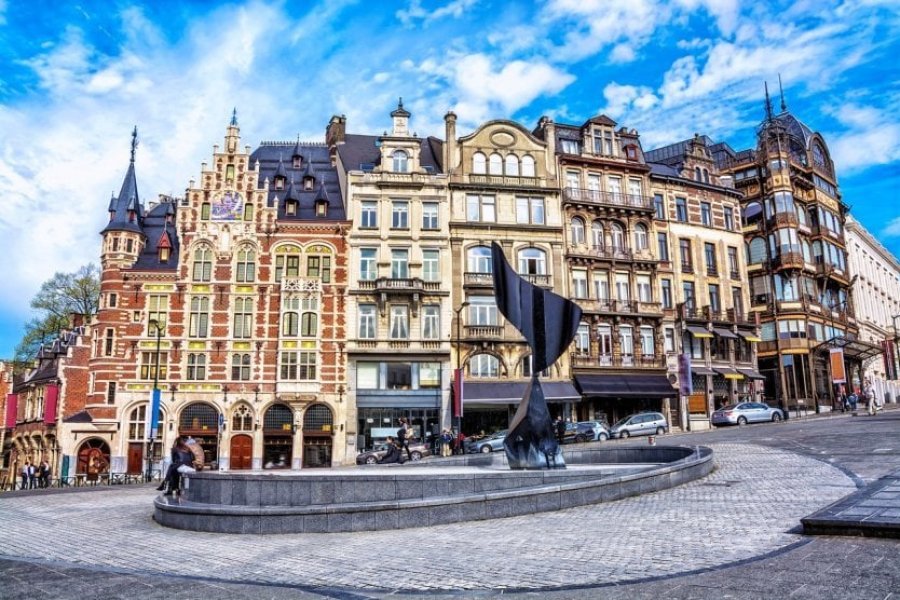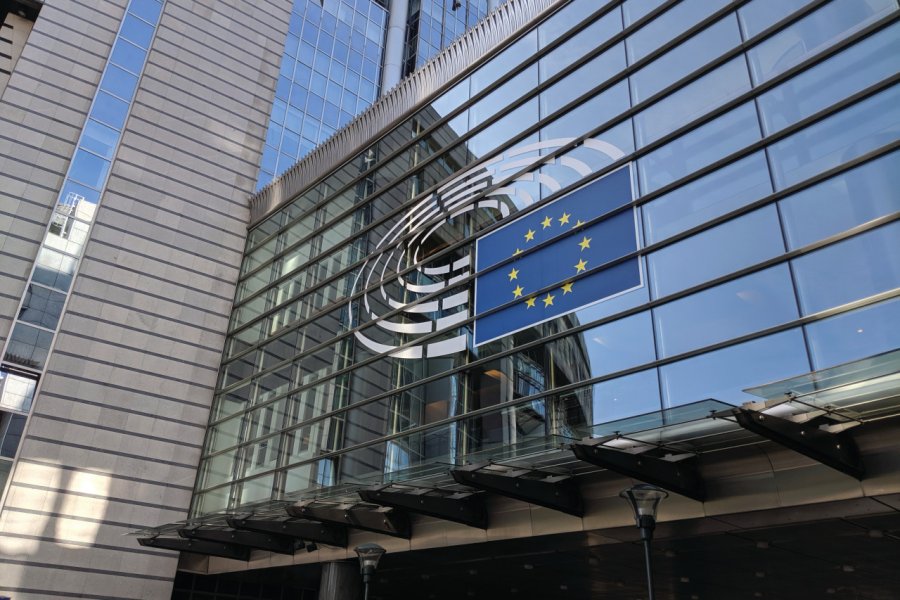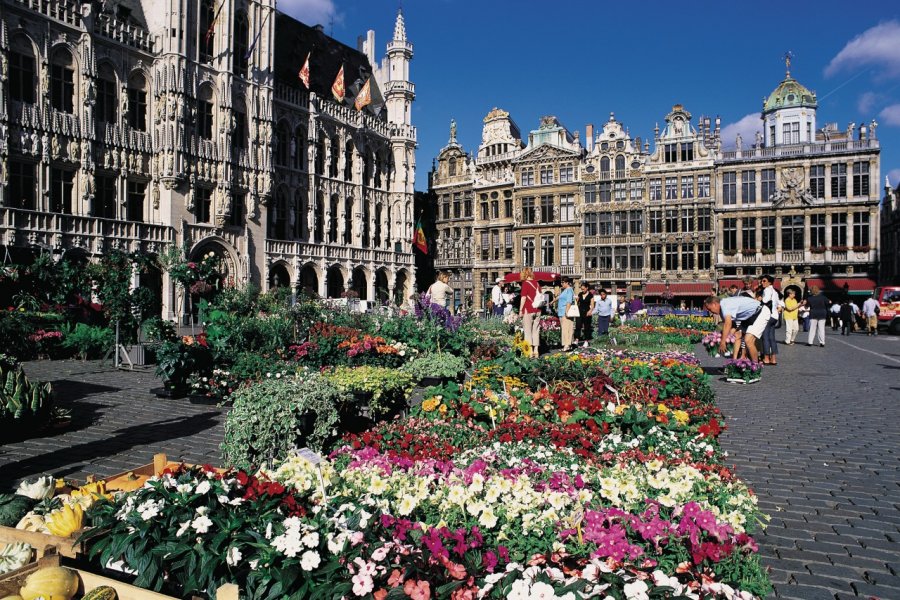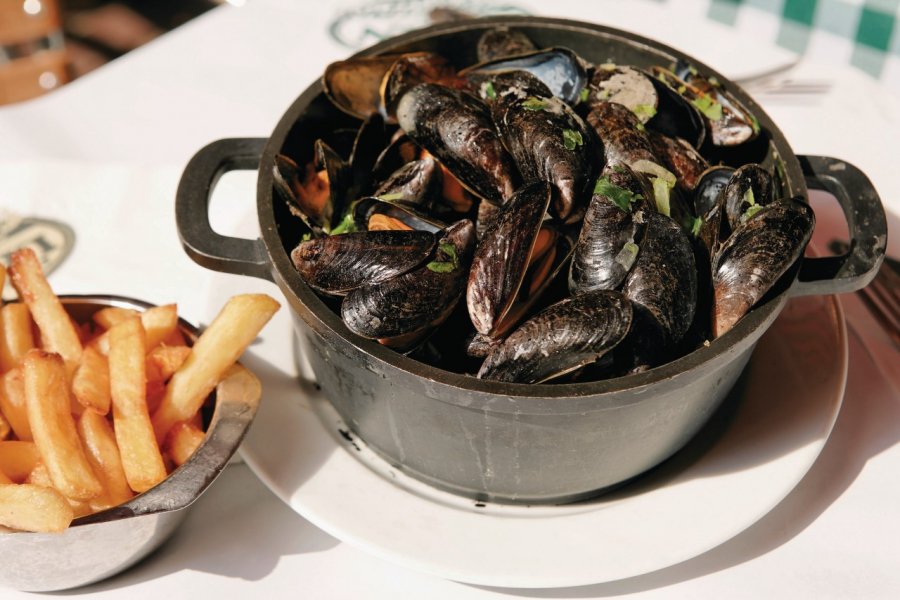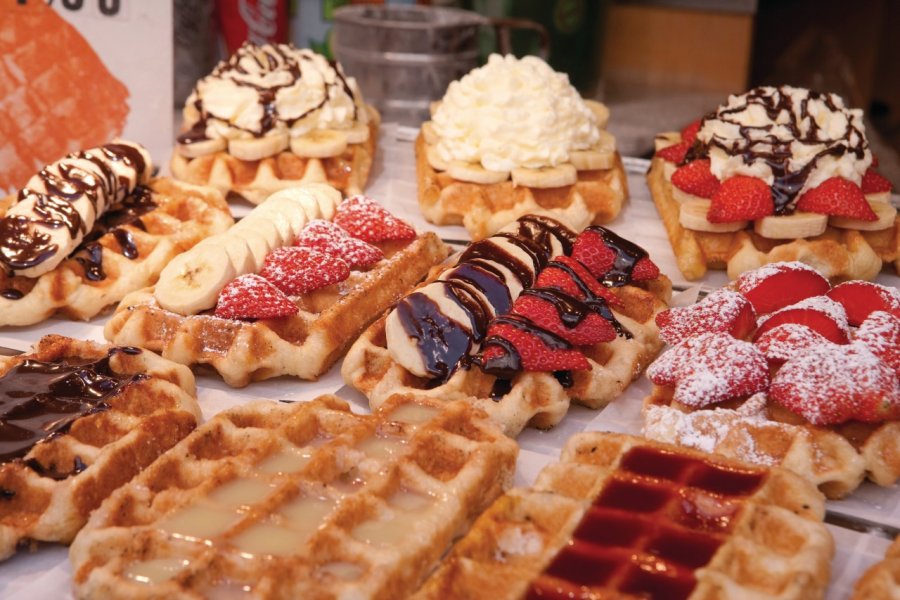Travel guide Bruxelles - Brussel
Capital of Europe - it houses several European institutions such as the Parliament and the Commission - and capital of Belgium, Brussels is a city always full of atmosphere and welcoming. You can discover it over a beer, gueuze or lambic, but also on the Grand-Place, on Place Sainte-Catherine, at the French fries stand or on the terraces of the mussel restaurants, and especially between the alleys of the flea market of the Place du Jeu de Balle. You can also read it in comics, of which Brussels is the epicenter. City of Hergé and Schuiten, Tintin, Spirou and Les Cités obscures can be found on the walls of buildings and in the Belgian Comic Strip Center. Its urban life exists even in its suburbs, far from the historical center, from the Marolles to the Châtelain, from the Cinquantenaire to Molenbeek. Brussels is also a green capital, with many parks and gardens, such as the Parc de Bruxelles or the Parc du Cinquantenaire, and even a forest on the edge of the city. A city of culture, Brussels is also home to the famous Atomium, near the Royal Park of Laeken, and the Mont des Arts, which houses the Magritte Museum. Note also that Brussels is the second French-speaking capital in the world, even though it was originally a Dutch-speaking Brabant city, a language that is still used alongside French! A tourist guide dedicated to Brussels will allow you to discover all the mysteries of the city and the best places to visit.
What to see, what to do Bruxelles - Brussel?
-
Book an activity
-
Customized travel
- Addresses to visit Bruxelles - Brussel
When to go Bruxelles - Brussel ?
Brussels is dynamic all year round, the only drawback being its cold and rainy climate. To know when to go to Brussels, here are some tips.
High tourist season: The best time to go to Brussels is between May and September, when the temperatures become more pleasant and the rains less frequent. The months of February, for the carnivals, and December, for the Christmas markets, are also good times to spend a few days. Belgium is synonymous with folklore and tradition. So be sure to check the dates of the Brussels festivities. Some parades can cause major traffic jams, as during carnivals. In the European capital: it is preferable to avoid using a car to get around Brussels on European summit days in particular.
Average tourist season : Although there is never any inactivity in Brussels, tourists are less numerous between November and March, outside of the Christmas and New Year period. The climate is indeed quite prohibitive.
Weather at the moment
Suggested addresses Bruxelles - Brussel
Travel Bruxelles - Brussel
-
Find a hotel
-
Car Rental
-
International e-SIM package
-
Find a local agency
Find unique Stay Offers with our Partners
How to go Bruxelles - Brussel
How to go alone
Nothing could be easier. Brussels is only 1h30 from Paris by Thalys and 40 mIn from Lille by Eurostar or TGV. Brussels Airlines, the Belgian national airline, operates daily flights from Paris-CDG, Lyon, Marseille, Nice, Strasbourg and Toulouse to Brussels Airport in Zaventem. You will not have any language barrier, nor cultural gap. You will be able to enjoy your stay to the fullest, without any questions asked.
How to go on a tour
An organized trip to Brussels will offer the classic tours, Atomium, Grand-Place and Marolles, as well as excursions to Bruges and Antwerp. Going with a tour operator will allow you to get prices on accommodations and transportation.
How to get around
Brussels is above all a city that can be visited on foot. The distances between the main tourist attractions are not great. However, the city is very well served by public transport. The center is well served by a network of subways (four lines) and streetcars running in tunnels, known as "pre-metros". To get to areas outside the Pentagon, you can often choose between streetcars and buses.
Featured articles Bruxelles - Brussel
Discover Bruxelles - Brussel
The capital of Belgium, but also of Europe, is necessarily cosmopolitan and multilingual. A city that is always lively and welcoming. A real patchwork of cultures that coexist with their diversity, both French and Flemish, almost equally, it speaks English in the offices. It also asserts itself as the capital of the zwanze, this implacable and unpretentious humor that belongs to it alone. The extent of its former suburbs, born with the 19th century, has created urban nuclei outside the historic center, which we detail in dedicated chapters in this guide. With more than 40 museums and monuments to visit, the city is full of cultural and historical attractions, restaurants, bars and cafes. But Brussels is also a real green capital, with many parks. Moreover, it organizes a lot of festivals that you should discover.
Pictures and images Bruxelles - Brussel
The 12 keywords Bruxelles - Brussel
1. #Art nouveau

From 1890 to 1910, Art Nouveau refused the academic rules. It favors lines and curves. This conception close to nature (motifs from fauna or flora) makes art accessible to all. Wood, stone, steel or glass allow this democratization. Brussels is full of buildings signed by Horta, Hankar or Van de Velde.
2. #Atomium
The Atomium was built for the 1958 World Fair. Its structure is an iron crystal enlarged 165 billion times. Inside, thematic exhibitions about Belgium and digital arts. Dominating the capital on the Heysel plateau, the Atomium reaches 102 meters. It offers a breathtaking panoramic view of the entire city.
3. #Comics
Belgian comics were born in 1926 with the first adventure of Tintin. In 1946, Hergé and his collaborators (Jacobs, Tibet, Cuvelier...) laid the foundations of the Brussels school: clean and legible lines, refined and vivid colors. A comic book museum and frescoes in various places in the city center brilliantly commemorate the 9th art!
4. #Beers
Brussels and its region are home to some categories of beer that cannot be found elsewhere. Like the lambic, of spontaneous fermentation and matrix of the gueuze and other krieks. Gueuze is the result of a blend of lambics, fermented in barrels before refermentation in the bottle. The kriek is born from the addition of northern cherries to young lambic.
5. #European Capital
The European Commission, the Council and the Parliament are based in Brussels. The Leopold and Schuman districts, transformed for the occasion over the last 3 decades, house several institutions in buildings with contemporary architecture. The former Luxembourg train station serves as an information point for visitors.
6. #Chocolates
Belgium is famous all over the world for its chocolate, and Brussels is its most beautiful showcase. All brands, from the most common to the most prestigious, are represented in the vicinity of the Grand-Place and other strategic locations. The taste of the Belgians remains mostly classical. The praline and its ballotin were invented in Brussels.
7. #Silk Forest
Hardwood forest of 4,383 ha located in the three regions of the country. Mainly made up of old beech trees with long boles, earning it the name of cathedral forest. Superb in all seasons. With its urban extension, the Bois de la Cambre, it is nicknamed the "lung of Brussels". It is one of the largest peri-urban forests in Europe.
8. #Grand-Place

The ancients built the heart of the city away from the traffic routes. Seven streets lead from the square to the gates of the first wall. The Grand-Place groups the houses of the guilds around the town hall. Victor Hugo spoke very highly of it. It is often called "the most beautiful square in the world".
9. #Magritte
The brilliant painter, author of so many beautiful paintings, is put to all the sauces undoubtedly to justify the innate or acquired surrealism of the Belgians. His famous "Ceci n'est pas une pipe" (This is not a pipe) is known to everyone and sounds almost like a national motto. For some years now, even the awards for Belgian cinema (their Césars) are Magrittes.
10. #Manneken Pis

Called the ketje of Brussels, this impertinent kid who embodies the carefree and resilient spirit of Brussels, with which the authentic Brusseleirs have often identified. Manneken Pis is also a babeleir (talker), a zwanzeur (party animal) and a stoefer (show-off). He owns more than 1,000 costumes that can be seen in the museum named after him.
11. #Museums

Although Brussels is not Paris, London or Amsterdam, the Belgian capital does have some major museums for which people travel from abroad. The Magritte Museum is the most visited in the Kingdom (with 3.2 million visitors). It is part of the Royal Museums of Fine Arts, which were founded in 1801 by Consul Bonaparte.
12. #Zinneke
In the popular language, a zinneke is a mongrel. This is the word with which the inhabitants of Brussels characterize their dog if it is not purebred. But isn't the authentic Brussels citizen also a zinneke? So many migrants have stopped or taken root here for centuries that crossbreeding is certainly their true nature.
You are from here, if...
You can't stand being compared to a French or Dutch person.
You no longer try to imitate the Brussels accent. You have acquired it... or not.
You go to at least one festival or folklore event every summer.
You like and practice the zwanze.
You can't resist the temptation of a cone of French fries to eat in the street or in a bistro.
You know that "No, maybe!" simply means "Yes, of course!"
You happily mock the royal family, but can't stand it too much when a stranger takes it on.
You don't believe it if a foreigner tells you after half an hour of explanations that he has understood how Belgium works.
You know the difference between a Brussels waffle and a Liege waffle.
You smile when someone claims to have had a beer when it was a Heineken.
You know at least one song by Grand Jojo, Stromae or Annie Cordy by heart.

